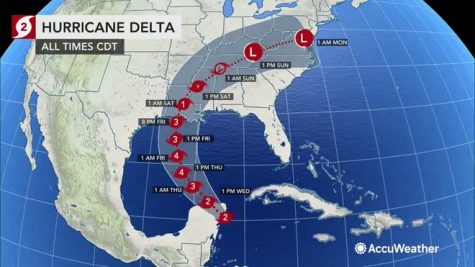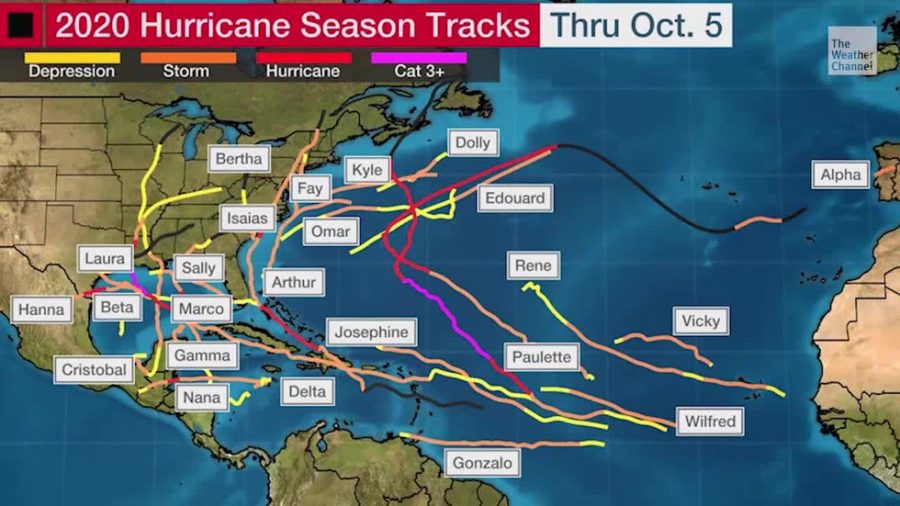2020’s Extremely Active Hurricane Season
Some Scientists Attribute This Hyperactivity to Climate Change
This year’s hurricane season began with tropical storm Arthur. Making landfall in North Carolina’s Outerbanks, Arthur was an early start to the season. The hurricane season officially begins in June and ends November 30th first but this storm formed around March 16th. Since then, there have been 25 named storms. This year marks the second time in history where meteorologists resorted to the Greek alphabet to name storms. Compared to 2005, when the Greek alphabet was first used, this year’s amount of named storms falls only two behind. That being said, there still remains over a month of hurricane season and it is predicted that there are even more storms to come.
Hurricane Delta, the most recent storm made landfall on Wednesday in Cancun, Mexico. This hurricane has been one of the fastest-growing hurricanes ever speeding up by 80 miles per hour in 24 hours. The hurricane had toppled about 95 trees and knocked out electricity to parts of Cancun and Cozumel. Delta was a category 2 when it made landfall in Mexico. Right now, the hurricane has category 3 force winds and it is expected to gain strength as it makes its way towards Louisiana and Mississippi.
Hurricane Delta will be the 10th hurricane this year alone to make U.S. landfall. This marks the record for most U.S. landfall in one season. Hurricane Delta will also break the record for most storms to reach landfall in Louisiana. In 2005, there were three storms that hit Louisiana (Cindy, Katrina, and Rita); Delta will be this year’s fourth. Still recovering from Laura, the strongest hurricane this year in August, Louisiana began evacuation on Tuesday.

Some scientists are attributing this year’s hyperactivity to global warming. Warm surface waters are a key factor in hurricane growth and temperatures in the Gulf of Mexico are two to four degrees higher than average. Another factor that contributes to hurricane growth is wind shear. Climate change contributes to lower wind shear which helps hurricanes strengthen. On top of this, rising sea waters add to the storm surge of these hurricanes making them a lot more dangerous. Another aspect of climate change that increases the severity of hurricanes is increased rainfall. From 1963 to 2012, the storm surge caused 49 percent of hurricane deaths, with rain accounting for 27 percent. However, from 2016 to 2018, extreme precipitation, not storm surge, was the top source of hurricane-related deaths.













